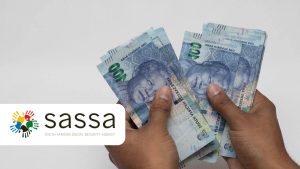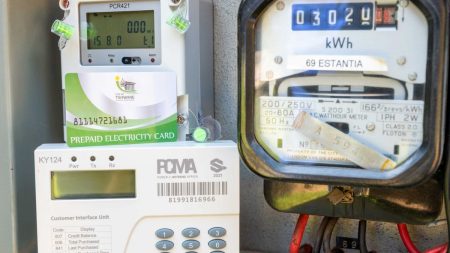Eskom, South Africa’s state-owned power utility, has proposed a review of the Free Basic Electricity Grant to ensure it reaches the intended beneficiaries—low income households. The company also recommends increasing the current allocation of 50 kilowatt-hours (kWh), which has remained unchanged since its introduction two decades ago.
The power utility outlined these proposals to the Standing Committee on Public Accounts (Scopa) as part of its strategy to address the escalating R100 billion municipal debt crisis. Eskom has also suggested taking over the administration of the Free Basic Electricity Grant and managing billing and revenue collection for municipalities.
These proposals come amid concerns that municipalities misuse electricity revenue to cover shortfalls in other services, leading to infrastructure neglect and non-payment to Eskom.
Municipal Debt Crisis and Eskom’s Proposals
1. Municipalities’ Growing Debt to Eskom
Municipalities owe Eskom over R100 billion, with some classified as “chronic defaulters”. The debt continues to grow due to poor financial management, lack of enforcement of debt relief conditions, and inadequate revenue collection.
Electricity and Energy Minister Samantha Graham-Mare highlighted the municipal debt problem, stating that both she and Minister Kgosientsho Ramokgopa are engaging municipalities to develop strategies for financial sustainability.
Of the 71 municipalities enrolled in the National Treasury’s debt relief programme, only 10 had honored their current account payments by November 2024, down from 23 in March.
2. Eskom’s Concerns About Free Basic Electricity Grant Administration
Eskom’s distribution executive Monde Bala expressed concerns about the administration of the Free Basic Electricity Grant. Currently, the grant is channeled through municipalities and the Department of Cooperative Governance and Traditional Affairs (Cogta), but Eskom argues that it does not always reach the intended poor households.
Bala emphasized the need for a direct mechanism to ensure the correct recipients receive the Free Basic Electricity Grant.
3. Increasing the Free Basic Electricity Grant Allocation
The Free Basic Electricity Grant, introduced two decades ago, provides 50kWh per month to indigent households. However, Eskom believes this amount is no longer adequate for modern energy needs. CEO Dan Marokane pointed out that while 10 million households qualify for the Free Basic Electricity Grant, only 2 million currently benefit, highlighting major gaps in accessibility.
Bala emphasized the need to revise the Free Basic Electricity Grant allocation and develop a more transparent distribution model.
4. Addressing Revenue Collection Challenges
Eskom is advocating for a ring-fenced electricity revenue system to ensure funds meant for electricity are used only for that purpose. The company also supports the expansion of prepaid electricity systems for struggling municipalities to improve revenue collection and prevent further debt accumulation.
Eskom also stressed the urgent need for investment in electricity infrastructure. Some municipalities, such as Maluti-a-Phofung, lack the meters necessary to bill residents accurately, contributing to revenue losses.
Why the Free Basic Electricity Grant Needs to Change
1. Inflation and Rising Cost of Living
When the Free Basic Electricity Grant was introduced in 2003, 50kWh was sufficient to power basic household needs, including:
- Lighting
- Small appliances (radio, TV)
- Cooking (for households with alternative heating sources)
However, with rising electricity costs and inflation, 50kWh is no longer sufficient to meet even minimal household energy needs. Many poor households rely on electricity for cooking, heating, and refrigeration, making an increase in the allocation essential.
Learn More: NERSA Approves 12.74% Eskom Electricity Tariff Increase Effective April 2025
2. Expanding the Reach of the Free Basic Electricity Grant
With only 2 million out of 10 million eligible households receiving the Free Basic Electricity Grant, Eskom is pushing for a more effective distribution mechanism. The current system is ineffective due to:
- Poor administration at municipal level
- Lack of awareness among eligible households
- Corruption and misallocation of funds
If Eskom directly administers the grant, it could ensure that all eligible households receive their free electricity allocation.
3. Preventing Municipalities from Misusing Electricity Revenue
Currently, some municipalities use revenue from electricity sales to cover other financial shortfalls, such as unpaid service fees for water, sanitation, and waste collection. This practice exacerbates Eskom’s financial crisis, as municipalities fail to pay for electricity supplied by Eskom.
By ring-fencing electricity revenue and improving billing transparency, Eskom hopes to reduce municipal debt and prevent financial mismanagement.
4. The Shift to Prepaid Electricity
Eskom has suggested moving struggling municipalities to a prepaid electricity system to improve revenue collection. Under this system:
- Customers pay for electricity in advance
- Municipalities avoid accumulating unpaid bills
- Revenue collection becomes more efficient
Several municipalities have already adopted prepaid metering, showing improved revenue collection rates.
Challenges and Potential Solutions
While Eskom’s proposals aim to solve long-standing issues, some challenges remain.
Challenges
Municipal Pushback
- Municipalities may resist Eskom’s involvement in billing and revenue collection.
- Local governments rely on electricity sales as a revenue source.
Funding for Infrastructure Upgrades
- Eskom’s plan requires investment in meters, billing systems, and network upgrades.
- Many municipalities lack the funds to implement these changes.
Legislative and Policy Hurdles
- Revising the Free Basic Electricity Grant requires government approval.
- Policies around municipal electricity sales may need to change.
Potential Solutions
Government Support & Policy Adjustments
- The Department of Electricity and National Treasury must prioritize municipal electricity reforms.
- Stronger accountability measures should be enforced to ensure municipalities comply with debt relief programmes.
Partnerships with the Private Sector
- Eskom could partner with private companies to improve infrastructure investment and smart metering.
- Public-private partnerships (PPPs) could drive efficiency in billing and revenue collection.
Consumer Awareness and Education
- Educating households on their Free Basic Electricity Grant entitlements can increase uptake.
- Encouraging prepaid electricity can help prevent overuse and non-payment.
Eskom’s proposals to review the Free Basic Electricity Grant, increase its allocation, and take over its administration could provide much-needed relief to indigent households. These measures, along with better revenue collection, infrastructure investment, and prepaid metering, aim to reduce municipal debt and ensure the sustainability of South Africa’s electricity sector.
However, successful implementation will require government collaboration, municipal cooperation, and policy adjustments. If executed effectively, these reforms could improve energy access for the poor while stabilizing Eskom’s finances.










